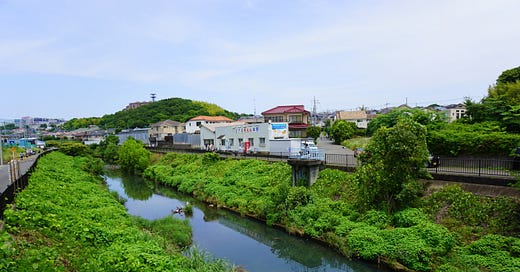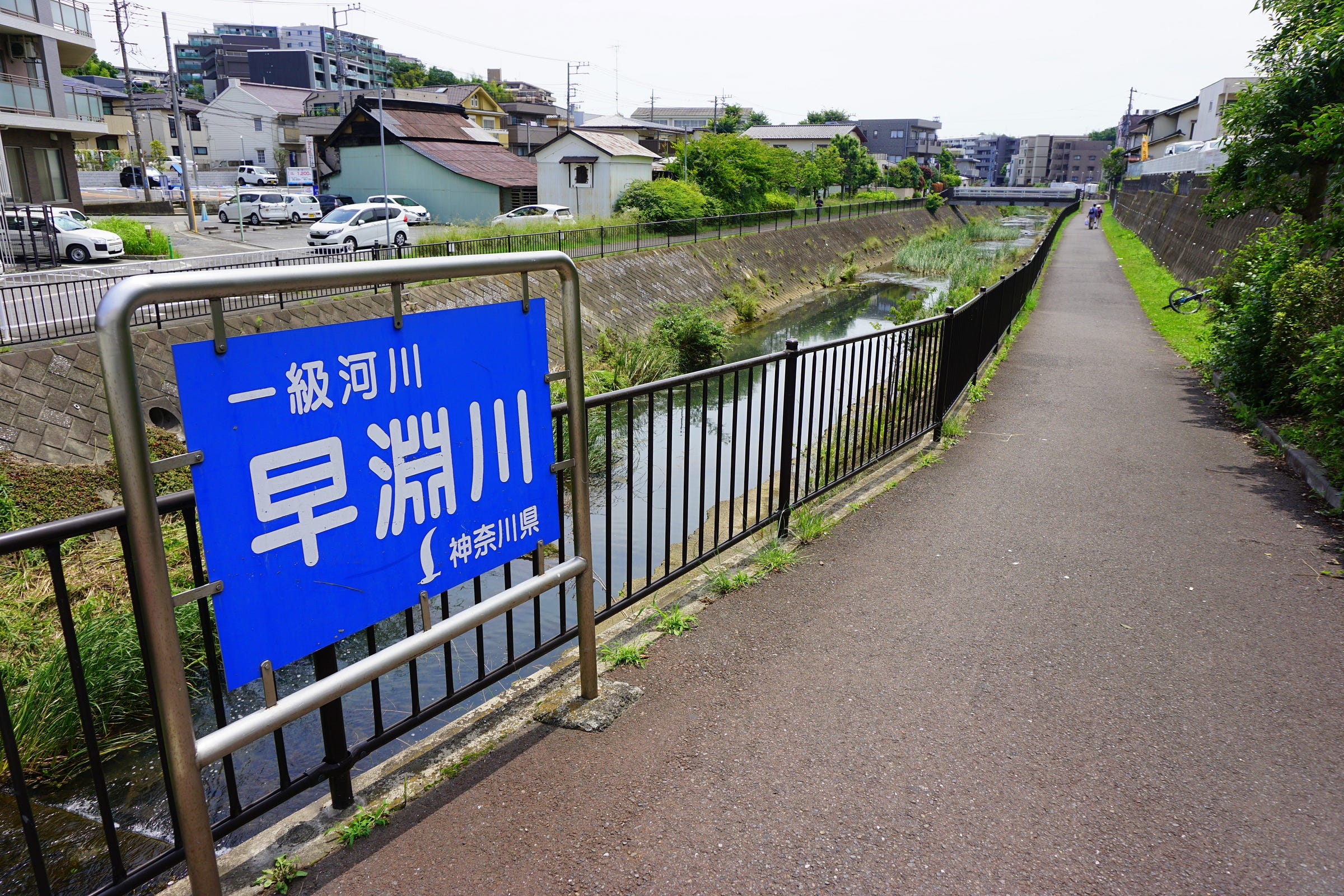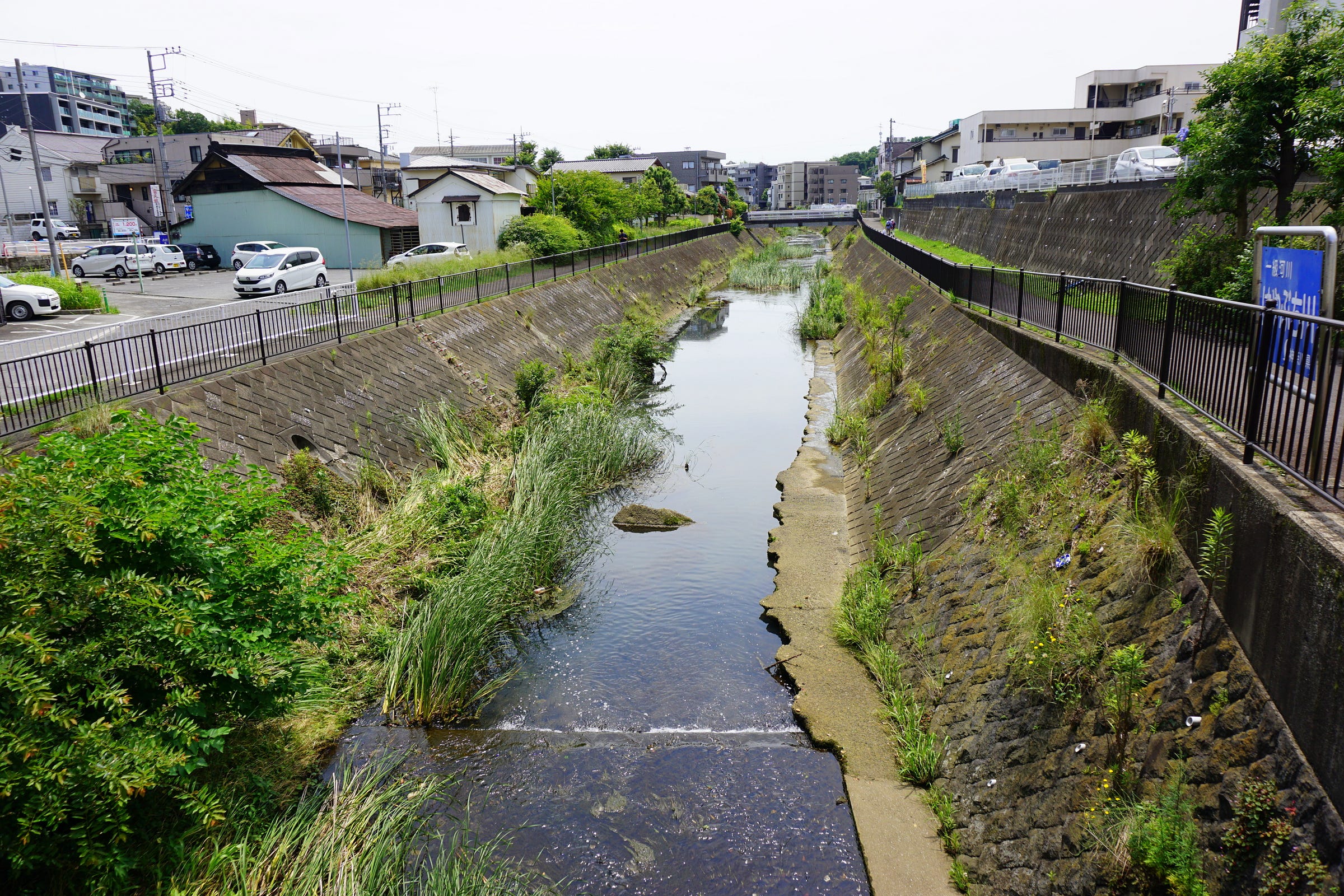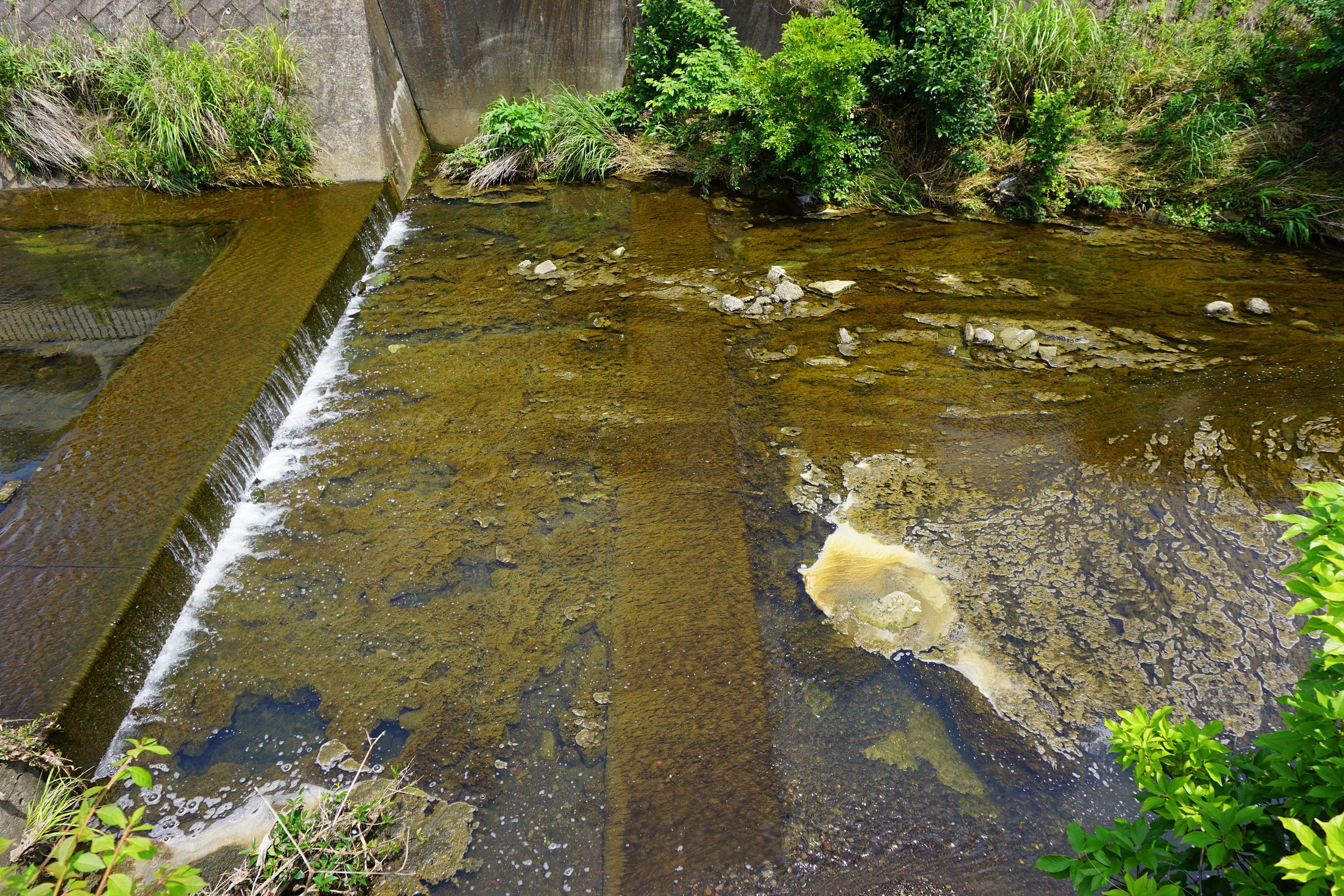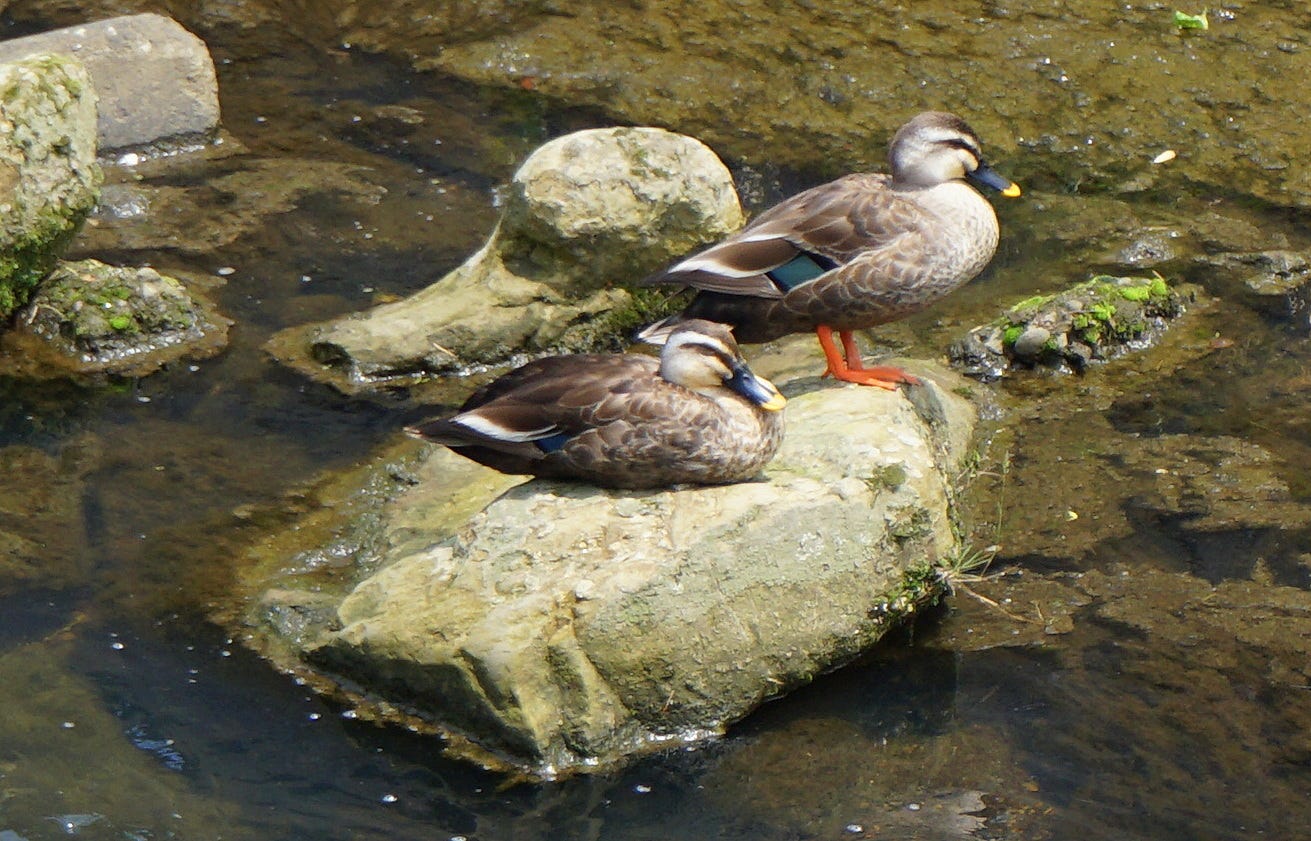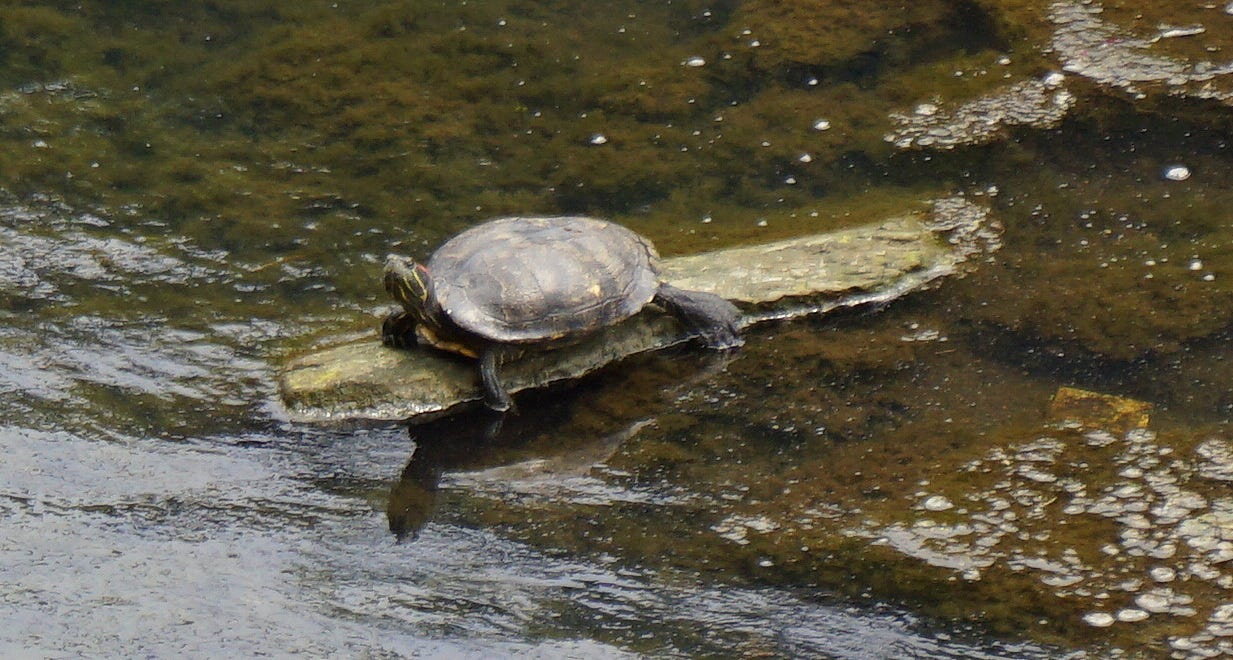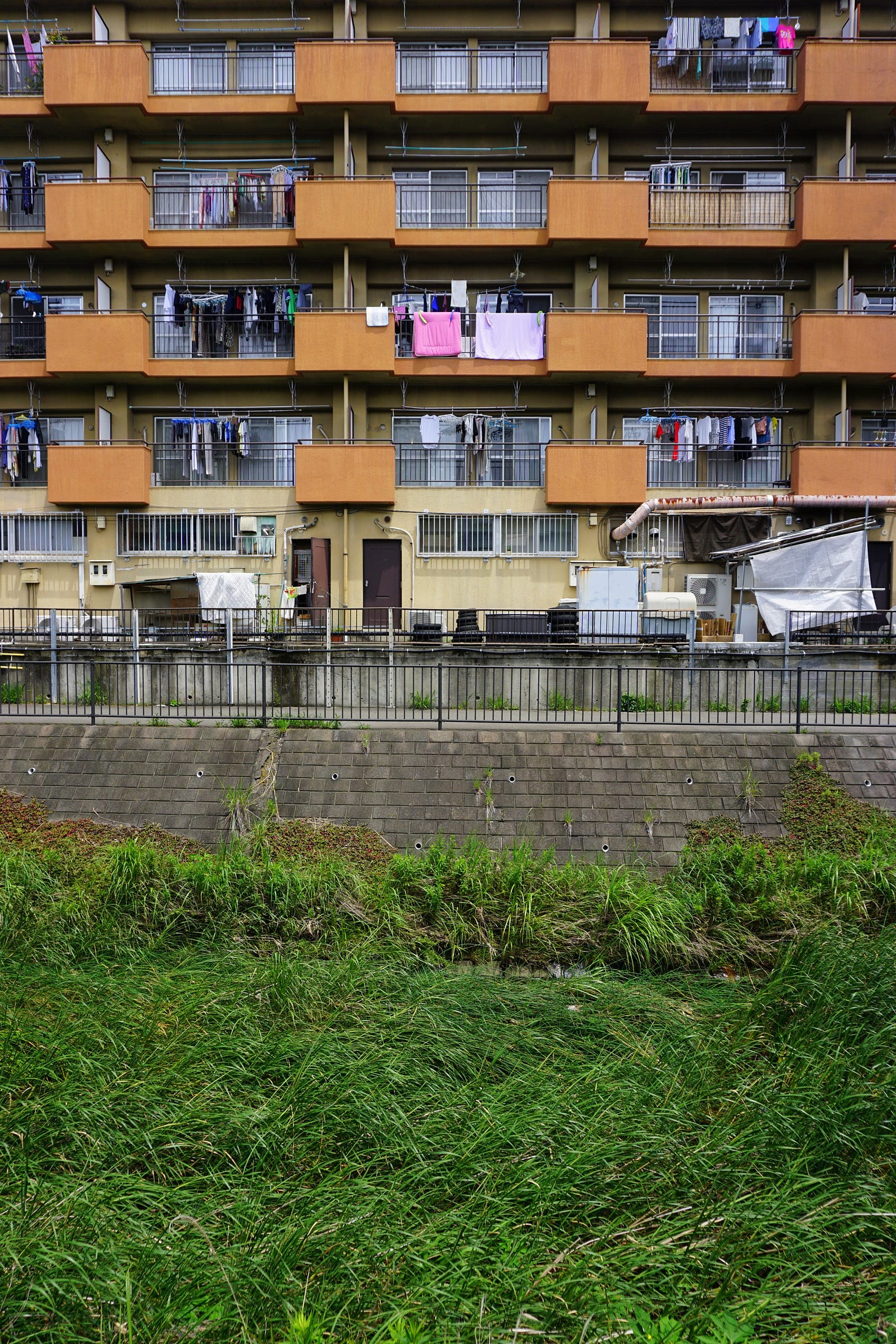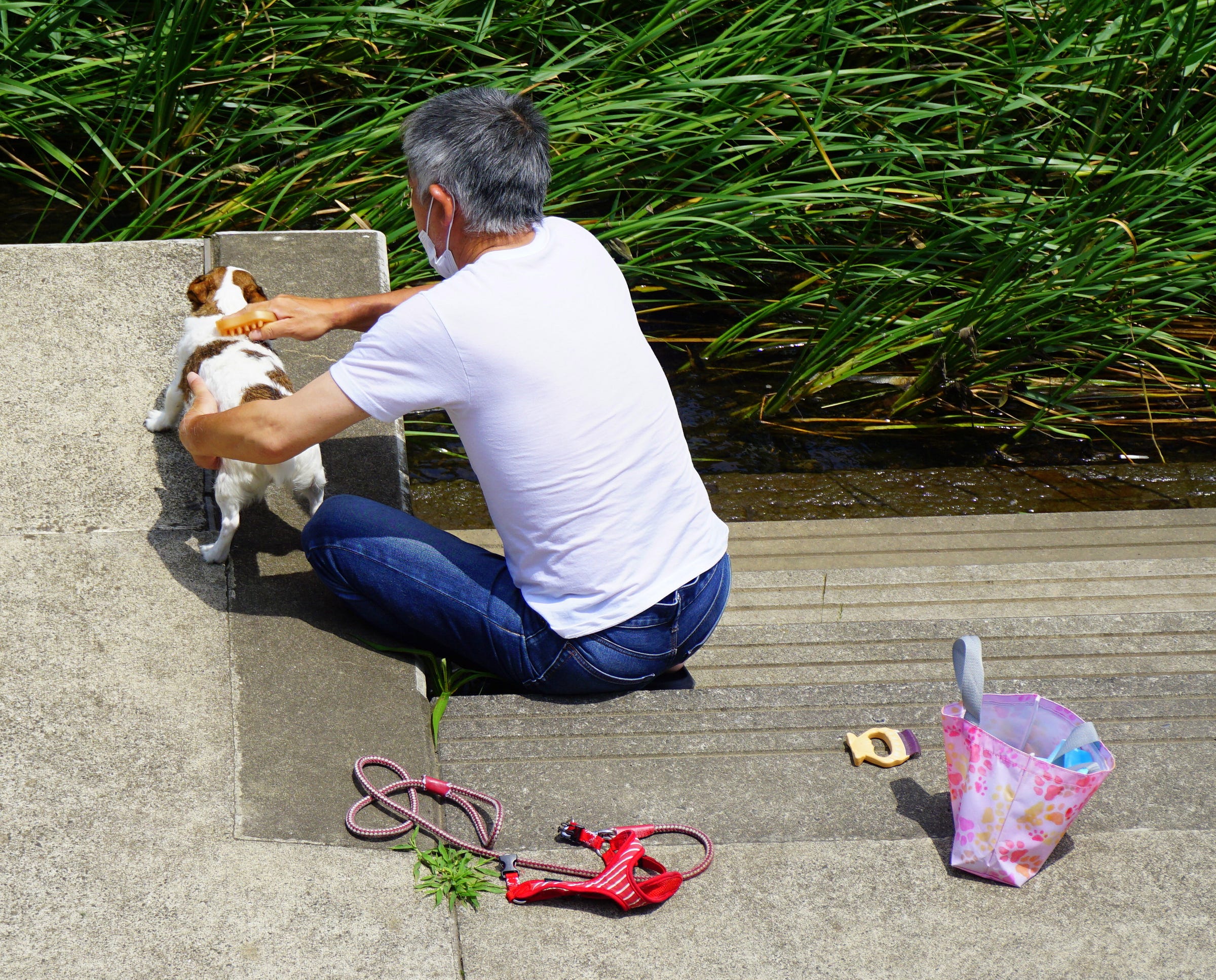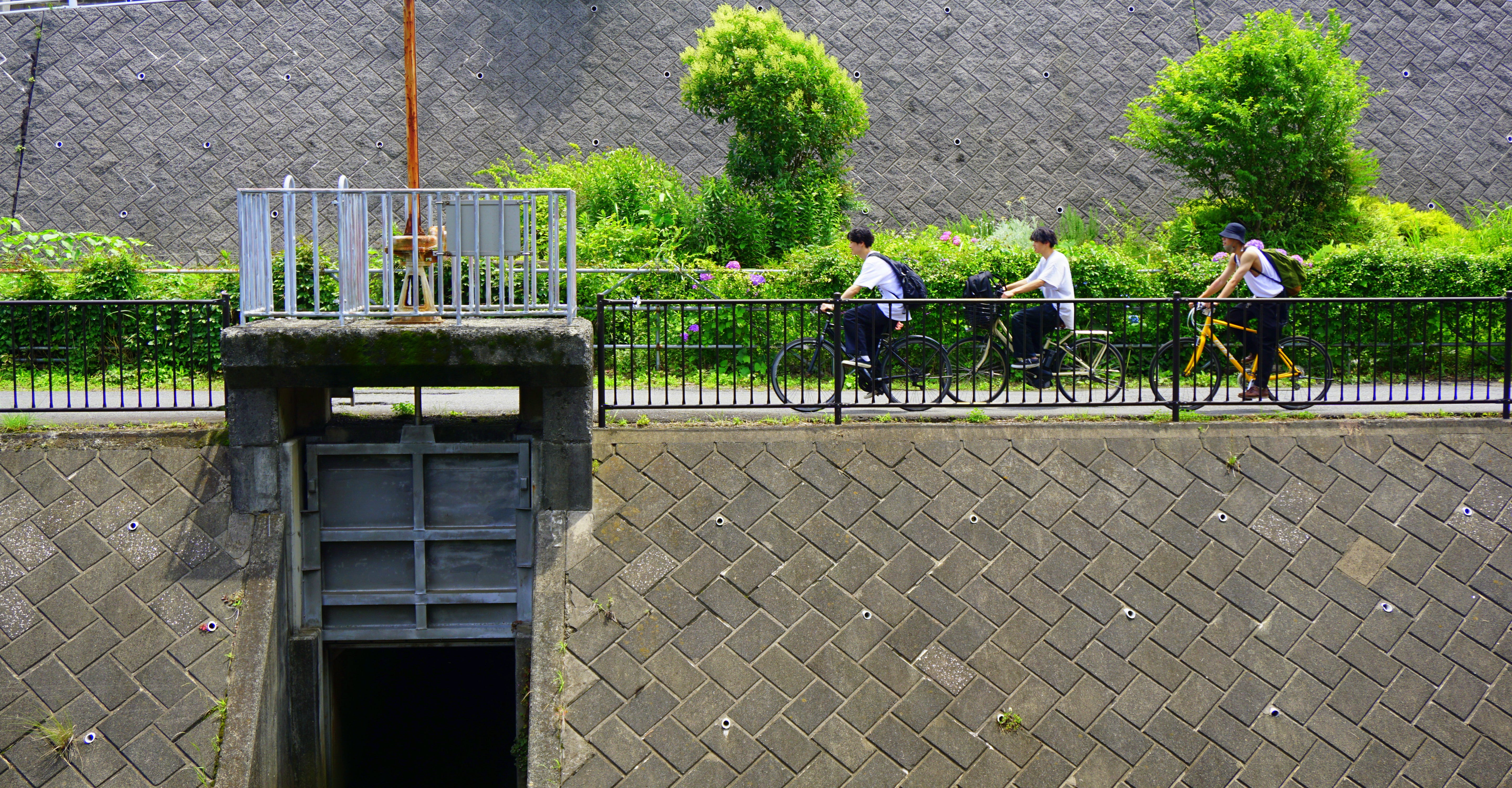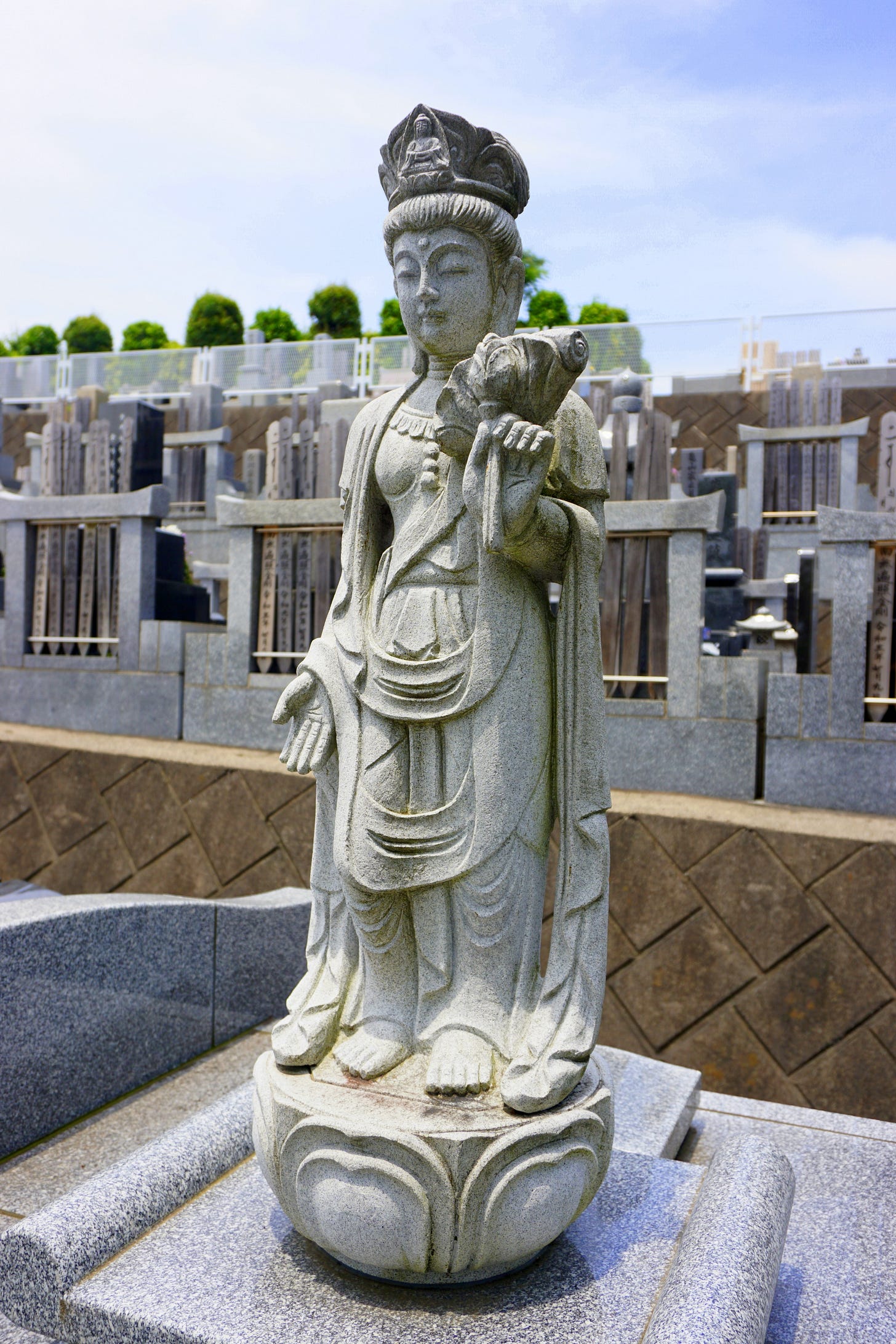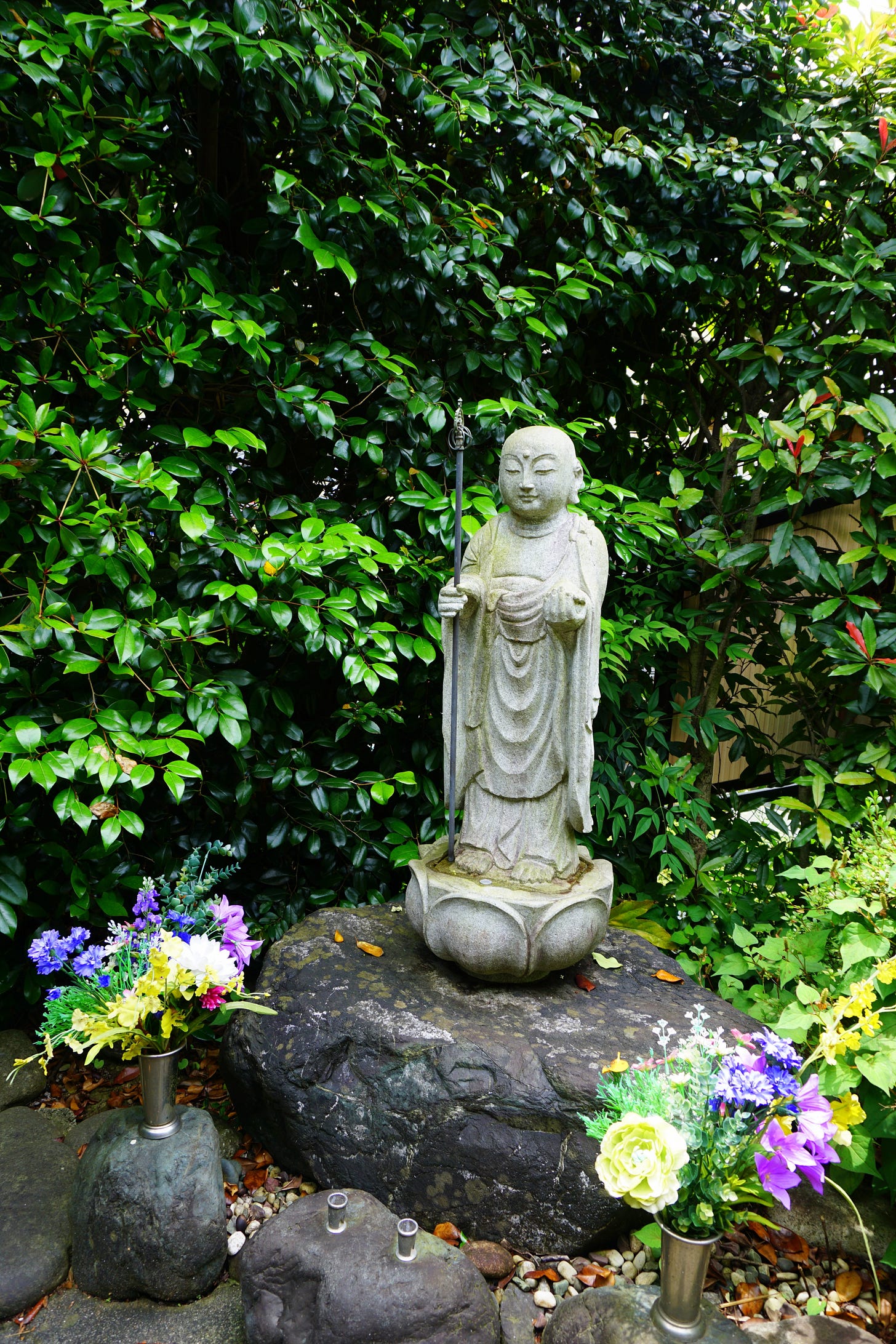Dear readers, what makes rivers so fascinating? And why do I like walking along rivers so much? Whatever it is, the Tokyo-Yokohama area has plenty of water streams, so here’s the report of a recent walk I took.
Twice a week, I teach in Azamino, Yokohama, not far from my house, and every time I walk from the railway station to the school, I pass by the Hayabuchi River. I always wondered where it came from and, more importantly, where it ended until last Sunday I decided to check it out.
As the sign says, the Hayabuchi is a first-class river. It sounds grand but in Japan it takes little to earn a first-class classification; you only have to be a river system that spans two or more prefectures. In Japan there are 14,062 such rivers, many of them quite short (the Hayabuchi, for instance, is only 13.7 km long) and some are born and die in the same prefecture.
Japanese rivers are notorious for being rough and running wild and the Hayabuchi, despite appearances, is no exception. In the past, its embankments had a tendency to break during heavy precipitations and typhoons. So starting in 1969, revetment work was carried out for 14 years, and now the entire stream is encased in concrete.
The river’s name points out to a much wilder past: Haya(se) means ‘swift current,’ ‘rapids,’ while fuchi means ‘deep pool’ or ‘deep water.’ Today’s Hayabuchi, though, is neither fast nor deep. On the plus side, it is home to ducks (or geese… I can’t tell the difference) and turtles.
When the river enters Tsuzuki Ward, it passes through hills that have been converted into residential land as Kohoku New Town. However, some fields remain and agriculture is also practiced.
We are now in the middle of the rainy season, the sky is mostly milky gray and cloudy, and yet we have seen little rain so far which means this summer threatens to be hotter and muggier than usual. Last Sunday was particularly nice, considering the season, and many people were out walking and cycling.
After about 30 minutes, the river disappeared underground. While trying to find the other loose end of the stream, I discovered Kanpukuji, a Buddhist temple.
This temple belongs to the Toyoyama school of the Shingon sect, and was founded in 1225. As all too often happens in Japan, it was completely burned down by the big fire of the Eda Post Town in 1897, and rebuilt in 1968.
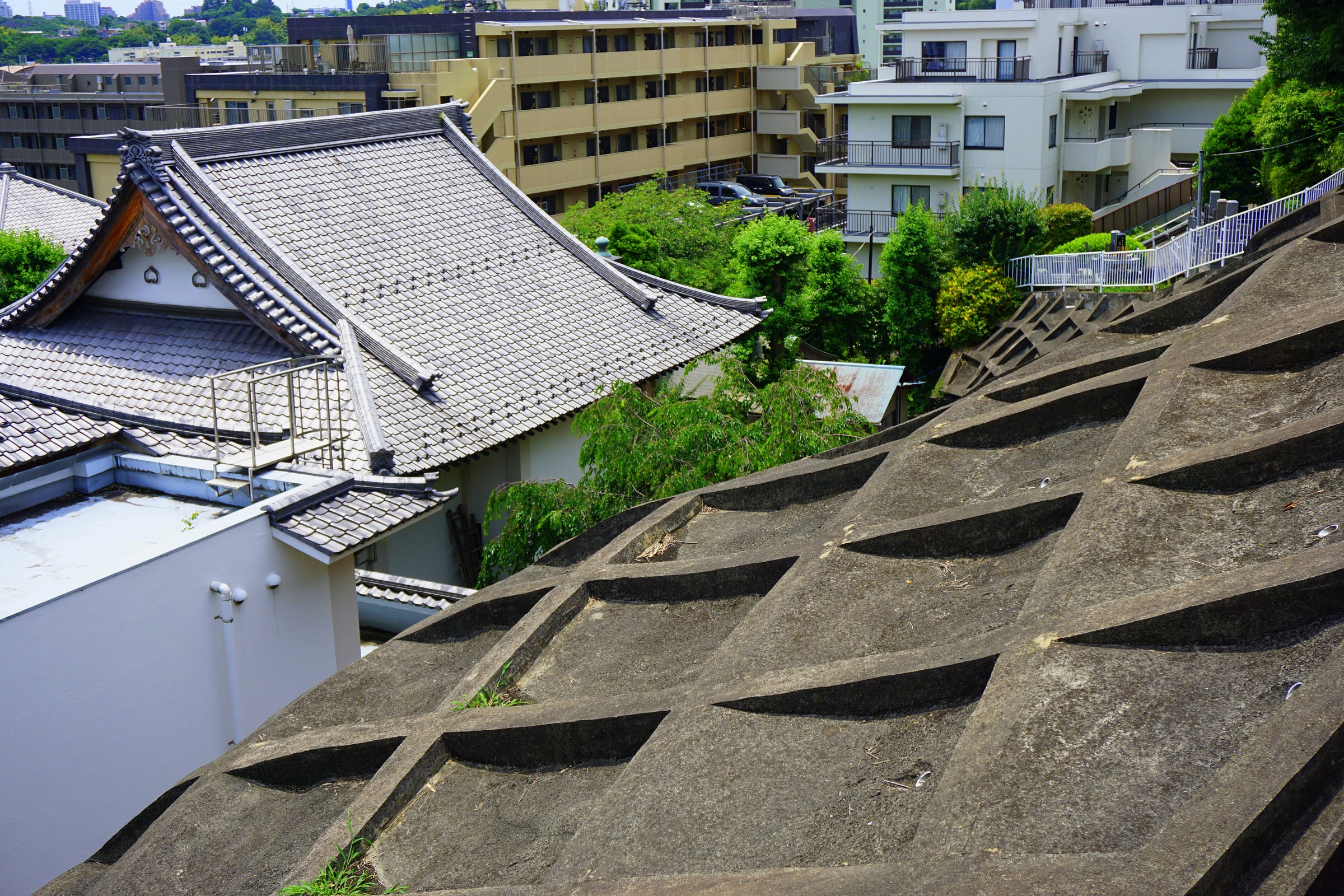
In 1984, a cemetery was built on the hill behind the temple. According to the temple website, it has “full facilities such as restrooms and rest areas, and tools for grave maintenance.” It costs 500,000 yen for up to two pillars (the equivalent of our tombstones). After 30 years, the ashes are removed from the urn and moved to the goshi (a sort of common grave) where they are mixed with those of other people.
Of course, a Buddhist temple wouldn’t be complete without a jizo, the Bodhisattva we have encountered in our last trip to Ibaraki.
This one was introduced to Kanpukuji to comfort people and relieve them of their anxiety after one great flood and epidemic occurred in the Kanto region. (End of Part 1)
You can read Part 2 here.
What does becoming a paid subscriber mean?
Let’s say that for the cost of a coffee a month, you will support my work and get the full experience.
Also, if you decide to become a paid subscriber, your generosity will be rewarded with a few gifts in the form of free downloadable PDFs.
If you opt for a monthly subscription (USD 5.00) you will get Made of This, a sort of memoir I wrote with Randy Osborne, and Tokyo Calling: Year One, a collection of some of the best essays and interviews I posted in my first year of activity. These two books alone are worth $20.00.
A yearly subscription (USD 50.00) will be worth more:
These four books alone are worth $82.00, so you save $32.00 right off the bat on top of getting full access to my archive.
Special Supporters (USD 100.00 or more - you decide) will get even more: the four above-mentioned books plus:
These seven books are worth $219.00, which means you are saving at least $119.00, probably more.
But wait, I’m not finished yet.
Special Offer!
Until the end of September, I’m offering my most loyal readers a 50% discount on the Special Supporter subscription. In other words, you can pay just USD 51.00 and still get those seven books.
(If you choose this option, click on Special Supporter and manually change the amount of money to $51/year)
Finally, if a paid subscription is not your thing but you still want to show your appreciation for what I do (e.g. a post you particularly enjoyed), you can just make a one-time donation here: paypal.me/giannisimone64

